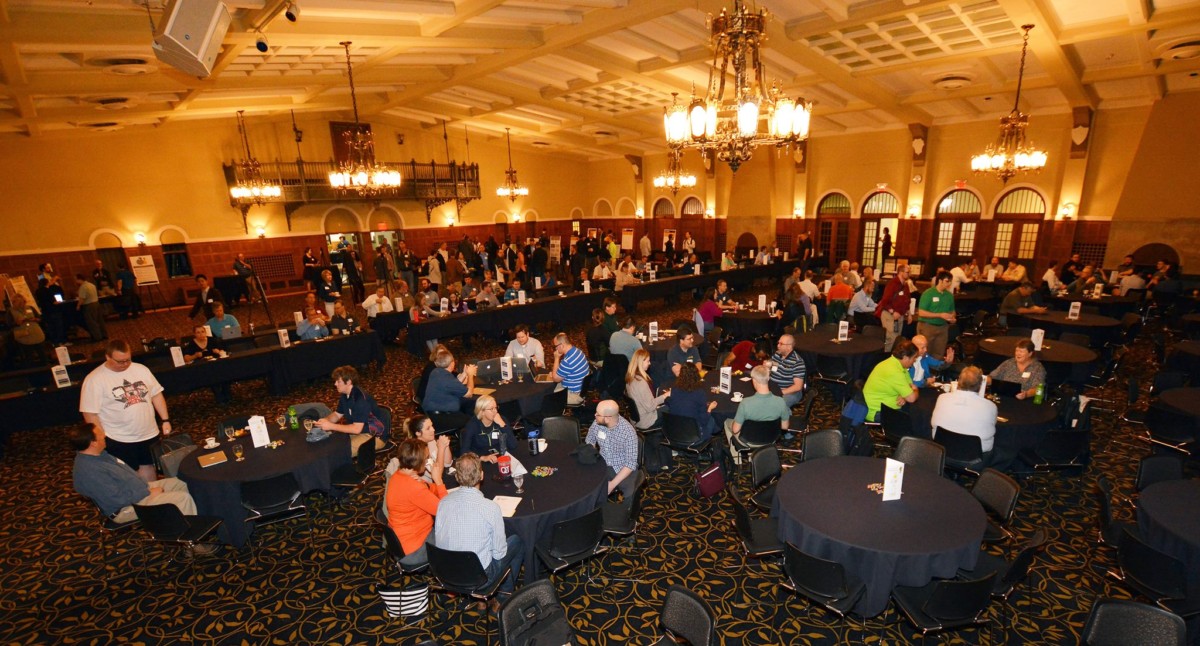Keynote address by Unizin CEO Amin Qazi at the University of Iowa Tech Forum 2017.
New forms of collaboration are in increasing demand for successful paths forward. Internal constraints, both within an organization and within an individual, occur when new collaboration is in conflict with existing regulations, processes, and habits, leading to missed opportunities for innovation.
The key component in Unizin’s approach to innovation through collaboration is our culture. The framework for necessary organizational change comes in two parts:
- Creation of teams who work in a trusting environment, employing radical candor to help each person reach his or her potential.
- Creation of a culture where focus on a particular outcome and the greater mission can be sustained, with minimal distraction or organizational friction.
This framework is simple in concept, but onerous in execution.
In one sentence, Unizin’s approach to collaborative innovation is intentionally creating a mission-focused culture of openness and sustained effort. The intentionality permeates everything, distinguishing between “solution finding” and “problem solving.” We want to find sustainable solutions rather than putting temporary bandages over the issues. Instead of creating a shiny, new tool for every problem, we want to optimize and repair existing resources to meet common needs.
Creating a culture of openness
The first aspect of the framework for collaborative culture is openness. As a leader, engendering trust might mean making more room for risk-taking to get buy-in from team members. Employees need to be set up to excel and know that they have the freedom to experiment, question, fail, learn, and keep progressing. If an employee is willing to dig deep to find solutions, then he or she will be more likely to buy-in to the mission with more confidence and commitment.
How can you create this type of culture at your organization?
- Share
Openness and honesty, more than anything, are what make a good place to work a great place to work. Leadership should be communicative and share their challenges, fears, and successes intentionally (i.e. with the right people).
- Hire Well
Or “hire correctly.” Hire the best team to do the job and the right person for each role. Core skills are key; everyone can’t be good at everything, so leadership must identify an individual’s strongest skills and allow that person to develop those competencies.
- Employ Radical Candor
Employees want and need constructive feedback to grow. It can be difficult to have conversations about performance because we want to avoid hurting others’ feelings. However, it is possible to care for people personally while still challenging them directly. Transparency and honesty are sometimes painful (that’s the “radical” part) but are critical to a strong work environment.
Beginning conversations with statements such as “I’m going to give you some radical candor” lets an individual know that the message about to be delivered is one with the best interest of the mission and the person at heart. If you’re worried about coming across as unkind, think about this: letting someone languish in mediocrity in their career because you’re afraid to be direct is worse than telling them like it is.
Creating a culture of sustained effort
By the nature of this industry, the work is boundless and there are several unknowns. The act of doing (that is, “sustained effort”) spurs new discoveries and ideas. Even if the path isn’t clear, trust and openness will help the team focus on the best solution for the mission. So, how do we encourage sustained effort?
- Agree on Direction
The Unizin Consortium is a perfect example of this. We always cite the African proverb: “If you want to go fast, go alone. If you want to go far, go together.” Everyone should be aligned on the same mission through openness and, consequently, positive workflows where freedom is not compromised. This starts with leadership establishing the direction.
- Relentlessly Ask, “What If?”
This, again, distinguishes between problem solving and solution finding. Problem solving is about mitigating the known; solution finding is about exploring the unknown. Prepare for the unknown by asking, “What if the unexpected happens?” Understanding of the user is crucial for keeping “what ifs” reasonable and realistic. The focus should be on the user, the person, and not the technology.
For example, at Unizin when we build our products and services, we take an accessibility-first approach. You have to design with all types of users, all of the “what ifs,” in mind.
- Make It Simple
Think through a complex problem and get to the point where you can easily explain the problem and the solution to a person new to the industry and the work. Simplicity keeps the focus on the end-goal, not the path used to get there.
These six elements of an intentionally-created, mission-focused culture build openness and support sustained effort. By employing this approach, unique ideas can grow and synergy is achieved.
(Photo credit: The University of Iowa Tech Forum 2017.)

